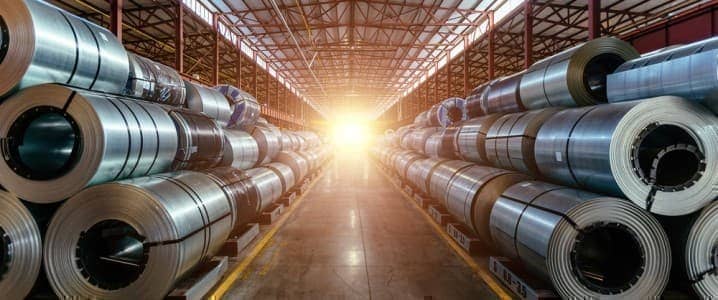Via Metal Miner
With a new government in place following the recent general elections, Indian steel manufacturing firms are again clamoring for the imposition of more import duties and other measures to curb cheap steel imports from China.
India ended up being a net importer of steel during the April-March 2024 period. According to provisional government data, this trend persisted, with finished steel imports reaching a five-year high in April and May. Following the renewed demands for import curbs, rumors say that Indian steel and trade ministries are already in talks to resolve the vexing issue.
Steel Manufacturing Firms React to Cheep Chinese Imports
The cheap imports flooding Indian markets, alongside China’s similar tactic of flooding European and African markets with cheap steel, has started to impact Indian steel exports negatively. This is in addition to the moves garnering criticism from countries like Turkey and Indonesia.
According to this report, because of pressure on steel prices, the price of China-made hot-rolled coil dropped to U.S. $520 per ton from $525 per ton within a week. Compare that to export prices of Indian steel, which ranged between $650-$660 per ton, and it’s not difficult to see the problem. India’s steel exports in May 2024 totaled 0.5 MT. According to provisional data from BigMint, a market research and consultancy firm, this marks a nearly 25% decline from the approximately 0.66 MT exported in April.
India’s Steel Industry Faces Crisis as Cheap Chinese Imports Flood Market
While export matters are of concern, what is even more distressing for Indian steel manufacturing companies is the flooding of the domestic market with Chinese steel. According to Ranjan Dhar, Director and Vice-President of Sales and Marketing at ArcelorMittal Nippon Steel India, Indian authorities need to implement “various measures” to control the rising steel imports from China and other indirect sources such as Vietnam.
According to Dhar, global steel consumption was down. At the same time, demand for Chinese steel within China was also down because of economic concerns and the real estate crisis. Therefore, the excess stocks had created a global oversupply. According to him, Chinese steel companies were, at times, selling steel at prices even lower than production costs. Get crucial updates on steel prices and steel industry news delivered straight to your inbox with MetalMiner’s weekly newsletter.
Chinese Exports Continue to Increase
In 2022, China exported 65-68 MT of steel. However, it exported approximately 85 MT in 2023 despite depressed domestic demand.
A report by the Indian steel ministry said the value of Chinese steel exports to India in April 2024 was U.S. $434.01 million as compared to $391.67 million in March. During these two months, India imported 1.1 million metric tons of finished steel, an increase of 19.8% compared to the same period the previous year.
Meanwhile, weak global demand and declining input costs continue to pressure steel prices. As a result, Indian steel manufacturing companies are prioritizing domestic demand, particularly as exports continue to be a less profitable option. While competitive pricing in West Asia and Southeast Asia poses challenges, the situation in Europe continues to worsen due to weak demand and stringent regulatory conditions. For his part, Dhar also advocates for restoring the basic customs duty (BCD) on steel imports to 12.5%, a significant increase from the current 7.5%.
Is India on Track to Outpace China?
A recent report by Moody’s suggests that India’s northward climbing clamor for steel and the coming expansion in steel making by private firms could place it above China in the ongoing steel war. The rating agency recently conducted a comprehensive analysis, comparing both countries in terms of demand prospects, market dynamics, and resource advantages.
According to the report, India’s steel demand is expected to grow by 5-7% over the next 12-18 months. This growth remains driven by robust economic and population growth, rapid industrialization and urbanization, and supportive government policies. In contrast, it projects that China’s steel demand will decline slightly due to a sluggish property market and slower economic growth.
India recently announced its aim to double its crude steel capacity to 300 million tonnes by 2030 under its national steel policy. Furthermore, steelmakers like Tata Steel continue to invest heavily in order to expand their capacities. Moreover, Moody’s forecasts that China’s excess capacity and India’s renewed capacity growth will exert downward pressure on steel prices in the coming day.
By Sohrab Darabshaw
More Top Reads From Oilprice.com:

